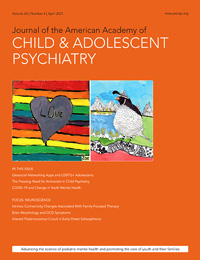Wraparound Blog
New Systematic Review Shows Wraparound to Be Effective, Particularly for Youth of Color
April 12, 2021 | Janet Walker
For nearly 30 years, “Wraparound” has been adopted in states and jurisdictions across the country to better meet the mental health and other needs of children and adolescents with serious emotional and behavioral needs and their families, and to keep them safely in their homes and communities. However, it has long been debated whether Wraparound is actually more effective than traditional services.
A new research article, published in the Journal of the American Academy of Child and Adolescent Psychiatry and downloadable in full from the Journal’s website, finds that Wraparound does consistently produce more positive outcomes for these youth. Moreover, Wraparound may hold potential for reducing disparities in outcomes for youth of color, disparities that have long been found for mental health services.
Using a widely-used technique known as “meta-analysis,” a team led by Jonathan Olson, Ph.D., an NWI-affiliated Research Scientist at the University of Washington, examined the results of 17 controlled studies published between 1996 and 2019 that compared the effects of Wraparound to services as usual for similar youth with “serious emotional and behavioral disorders.”
The study found significant effects in favor of Wraparound across a range of important youth outcomes – including reduced out-of-home placements, improvements in mental health functioning, and better school attendance and achievement. The study also found significantly lower overall costs of care for youth in Wraparound, due to less spending on costly out-of-home placements. Across the 17 studies, Wraparound effects were more positive for samples with higher proportions of youth of color.
“For many years, public systems have used Wraparound because it makes sense and provides families with the kind of compassionate approach they say they want and need,” said Eric Bruns, Professor of Psychiatry and senior author on the research team. “Now we have clear evidence that Wraparound is also more effective and cost-effective than traditional services.”
Wraparound was innovated in the 1980s as an alternative to service delivery strategies that were driven by professionals and forced families to navigate complex systems and services on their own. When families became overwhelmed and/or failed to get their needs met, costly institution-based care was often the result.
Instead, Wraparound invests in a care coordinator with low caseloads who convenes a team that includes the family’s friends and natural supports, as well as professionals. “Wraparound lives up to principles we want to uphold – for example, being youth- and family-driven, strengths-based, and using a team of people with a blank checkbook to ‘do whatever it takes’ to meet the needs of the youth and family,” said Bruns. “While many states have taken Wraparound to scale, others have been more hesitant, saying it wasn’t ‘evidence-based.’ This study should help address those concerns.”
Olson points out, however, that the study also reinforced how important it is to implement Wraparound with quality, and in a way that is true to the model.
“Unfortunately, many studies were conducted before there were measures of fidelity, or measures of ‘doing Wraparound right,'” said Olson. “However, for studies that did measure fidelity, we saw more positive outcomes for youth and families who received care that was of high-quality and closely adhered to Wraparound principles.”
Bruns said that the finding related to the potential for Wraparound to better meet the needs of youth of color was unexpected, but perhaps not surprising.
“We need to remember that in all these studies, Wraparound was compared to more traditional mental health, child welfare, and juvenile justice services,” Bruns said. “And there is a long history of research showing disparities in access and outcomes for youth of color and their families in such systems. It may be that by allowing for more youth and family voice and choice, and teams that include family, friends, and community members, Wraparound helps reduce those disparities.”
Bruns emphasized, however, that such questions were not an explicit focus of the new meta-analysis, or of the studies that were reviewed. “In Wraparound and youth services in general, we need to continue to research what may address racial and other disparities in outcomes with greater rigor.”

